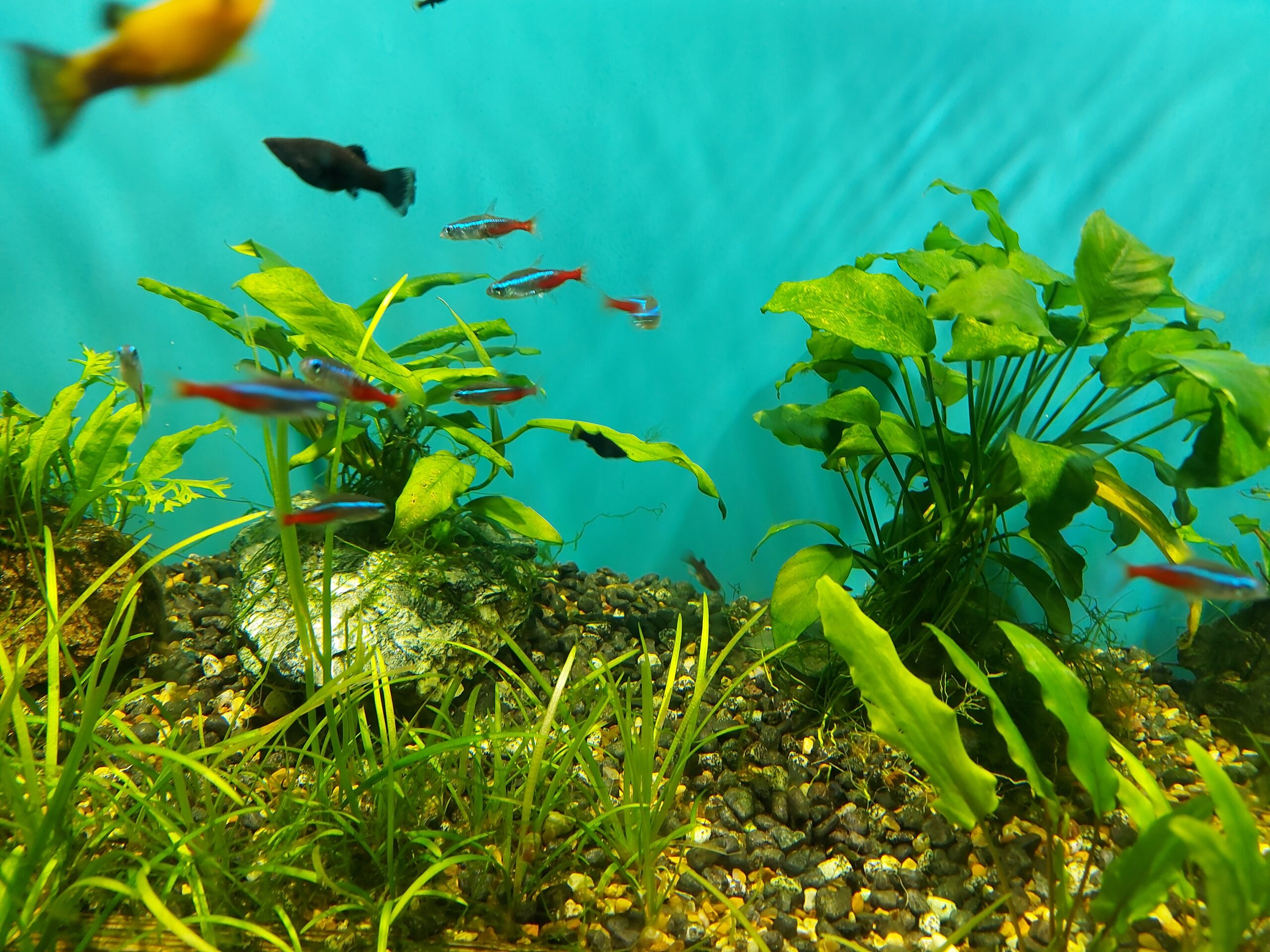Tetra fish are popular with aquarium enthusiasts due to their vibrant colors and ease of care. However, some owners may wonder if tetras are cannibals and if they threaten their tank mates. The answer to this question is not a simple yes or no, as it depends on the tetra species and their environment.
Some tetra species exhibit cannibalistic behavior, such as the black tetra and the neon tetra. This behavior is typically seen in overcrowded or underfed aquariums, where the tetras may turn to eat their own kind out of desperation.
However, in a well-maintained and adequately stocked aquarium, cannibalism is less likely to occur.
Overall, while some species of tetra may exhibit cannibalistic behavior, it is not a common occurrence in well-maintained aquariums.
Proper feeding and tank maintenance can help prevent this behavior and ensure a peaceful environment for all tank inhabitants.
Tetra Fish Behavior
Social Behavior
Tetra fish are known for their social behavior and are often kept in groups of at least six. They are peaceful fish that get along well with other non-aggressive species. When kept in groups, they swim together and even perform synchronized swimming routines.
Tetra fish are known to be playful and curious. They are active during the day and will spend most of their time swimming around and exploring their environment. They are not known to be territorial and will not fight with other fish for space.
Feeding Habits
Tetra fish are omnivores and will eat both plant and animal matter. They have small mouths and prefer to eat small food items. They feed on insects, small crustaceans, and plant matter in the wild.
When kept in captivity, tetra fish should be fed a varied diet, including dry and live foods. They will readily accept flake and pellet foods but must supplement their diet with live or frozen foods such as brine shrimp, bloodworms, and daphnia.
Tetra fish should be fed in small amounts several times a day. Overfeeding can lead to health problems such as bloating and constipation.
Removing any uneaten food from the tank is essential to prevent water quality issues.
In conclusion, tetra fish are social and peaceful fish that enjoy swimming in groups. They are playful and curious and readily accept a varied diet that includes dry and live foods.
Cannibalism in Tetra Fish
Tetra is popular aquarium fish known for their beautiful colors and peaceful nature. However, many aquarists wonder if tetra fish are cannibals.
The answer is yes. Tetra fish can be cannibalistic, especially in certain situations.
Reasons for Cannibalism
Cannibalism in tetra fish can occur for several reasons. One common reason is overcrowding. When tetra fish are kept in a small aquarium with too many fish, they may become aggressive and territorial, leading to cannibalism.
Another reason for cannibalism is hunger. If tetra fish are not provided with enough food, they may eat their kind.
Preventing Cannibalism
To prevent cannibalism in tetra fish, providing them with a suitable environment is essential. This includes a spacious aquarium with plenty of hiding places and plants. It is also necessary to avoid overfeeding or underfeeding the fish.
Providing a balanced diet and feeding them small amounts several times a day can help prevent hunger-induced cannibalism.
Another way to prevent cannibalism is to separate aggressive fish from the rest of the group. This can be done by providing a separate aquarium or using a divider to separate the aggressive fish from the rest of the group.
Tetra fish can be cannibalistic. Still, this behavior can be prevented by providing a suitable environment, avoiding overfeeding or underfeeding, and separating aggressive fish from the rest of the group.
Conclusion
In conclusion, while tetra fish may exhibit cannibalistic behavior in certain circumstances, it is not a natural or common behavior for them. The available research suggests that tetras are primarily herbivorous or omnivorous fish, and their diet consists of plant matter, insects, and small crustaceans.
It is important to note that cannibalism in tetras is often a result of overcrowding or inadequate food sources and can be prevented by providing a suitable environment and a balanced diet. It is also worth mentioning that not all tetra species exhibit cannibalistic behavior, and some are more prone to it than others.
Overall, it is essential to understand tetras’ natural behavior and dietary needs to provide them with a healthy and thriving environment. While cannibalism may occur in certain circumstances, it is not a defining characteristic of these fish and can be prevented with proper care and attention.




